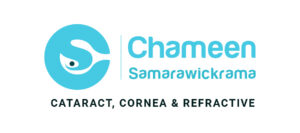
Cataract surgery is a safe procedure that involves removing the cloudy lens of the eye and replacing it with an artificial lens, known as an intraocular lens (IOL). Without an IOL, vision after cataract surgery would be significantly impaired, as the natural lens plays a crucial role in focusing light onto the retina. With the advent of modern IOL technology, many patients can now achieve excellent visual outcomes and enjoy a greatly improved quality of life after cataract surgery.
There are several types of IOLs available, each with different features and benefits. The type of lens chosen for cataract surgery will depend on a variety of factors, including your visual needs, lifestyle, and any pre-existing eye conditions.
Monofocal IOLs:
Monofocal IOLs are the most common type of IOL used in cataract surgery in Australia. They provide good vision at one distance, typically for distance vision. Monofocal IOLs come in two types: spherical and toric. Spherical IOLs correct spherical errors (myopia or hyperopia) in the eye, while toric IOLs correct both spherical errors and astigmatism.
Astigmatism is a condition where the cornea of the eye is not perfectly round, causing blurry or distorted vision. Toric IOLs have a special design that can correct astigmatism, which can improve the quality of vision after surgery. Monofocal IOLs can also be combined with glasses or contact lenses to correct vision at other distances.
Extended Depth of Focus (EDOF) IOLs:
EDOF IOLs are a newer type of IOL that is becoming increasingly popular in Australia. They provide clear vision across a zone of distance, reducing the need for glasses or contact lenses. EDOF IOLs work by extending the depth of focus of the eye, providing a continuous range of vision from intermediate to far.
EDOF IOLs are a good option for patients who want to reduce their dependence on glasses or contact lenses after cataract surgery. They provide good visual acuity at intermediate distances, such as computer work and large print. However, some patients may still need glasses for reading small print.
Trifocal IOLs:
Trifocal IOLs are another type of IOL that provides clear vision at multiple distances. They have three different focal points, providing clear vision at near, intermediate, and far distances. Trifocal IOLs provide a continuous range of vision, reducing the need for glasses or contact lenses.
Trifocal IOLs are a good option for patients who want to reduce their dependence on glasses or contact lenses after cataract surgery. They provide good visual acuity at all distances, including reading small print and driving at night. However, they are more expensive than other types of IOLs and may not be covered by insurance.
To sum up, choosing the right type of IOL is an important decision that requires careful consideration. Monofocal spherical lenses are the most commonly used type of IOL, but patients with astigmatism may benefit from Monofocal toric lenses. Similarly, EDOF IOLs and Trifocal IOLs have their own advantages and disadvantages, and the choice of IOL will depend on the patient’s individual needs and preferences. It is essential to discuss the available options with an eye surgeon and choose the type of IOL that best suits your needs.
